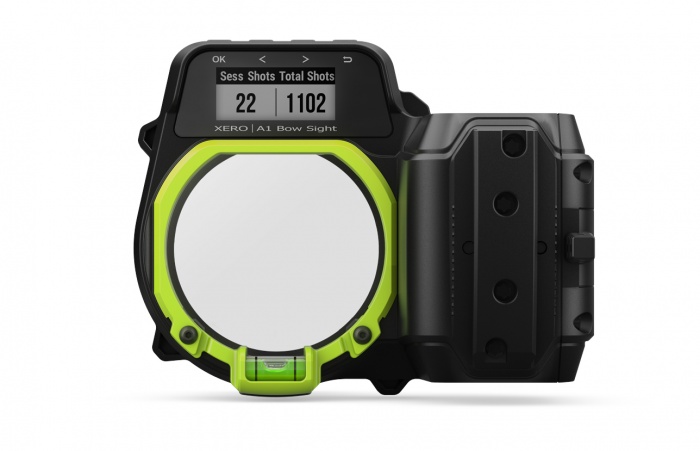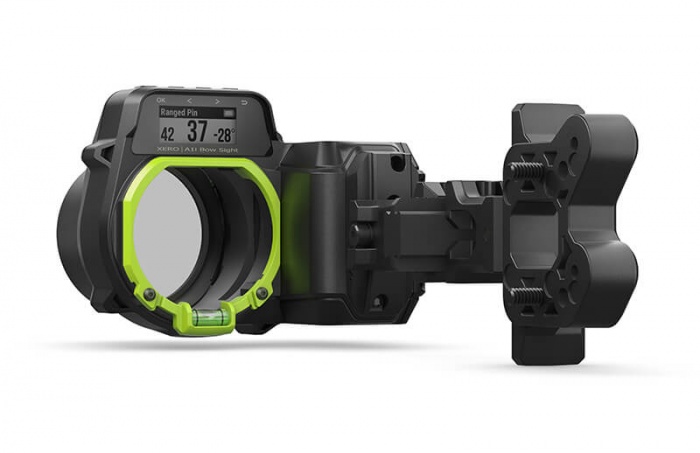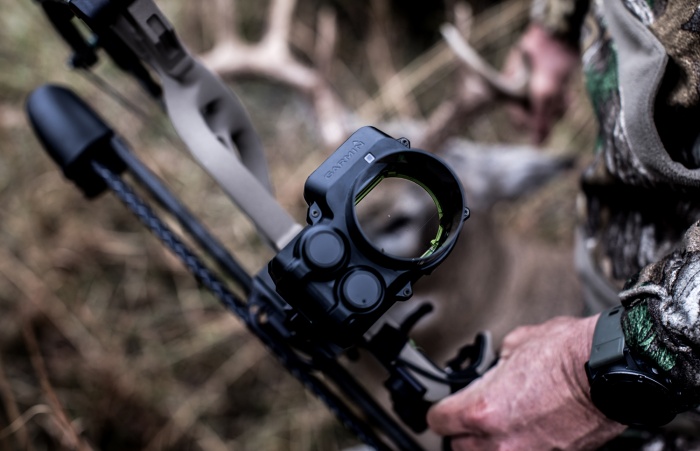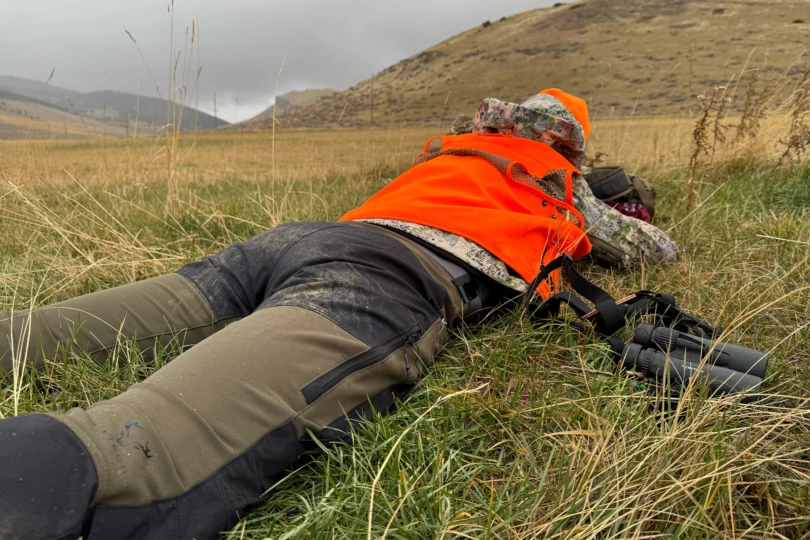Garmin’s virtual pin sights remove almost all the guesswork from range-finding of a target. But it could also raise some (potentially legal) questions.
Should archery hunters be allowed to use more technology to make more ethical kills? It’s a question archers, and likely wildlife managers and legislators, will soon have to answer with the introduction of the Garmin Xero range-finding bow sight.
If you’ve been in the field bowhunting, you’ve experienced pre-ranging a number of possible zones where the animal you’re targeting might cross your shooting lanes. Using a range finder, this gives you a ballpark estimate of the ranges an animal might stand when you have a shot.
The Garmin Xero claims to take the guesswork out of your site picture when the moment presents itself. In short, the Xero will provide precise digital distances and calculations to improve archers’ accuracy. We took our first look at the product at the Archery Trade Association show last week.
Garmin Xero: Range-Finding Guesswork Removed
Bow sights work by giving archers a reference point to use to aim at targets at varying distances. Because arrows arc dramatically in flight, choosing the correct sight pin is critical. Miscalculating by just a few yards can be the difference between a perfect ethical shot and a non-recovered animal that suffers.
The Garmin Xero removes this guesswork, providing the perfect virtual sight pin for the range of the target. It even figures out variation for elevation when shooting uphill or downhill.
For archery hunters, this is big news. But it will likely drive a debate about how much technology laws should allow in this more primitive style of hunting.
Garmin Xero Bow Sight: How It Works
The Xero comes in two models, the A1 and A1i. The core components include an integrated laser range finder and an LCD screen showing distance, true horizontal distance, and angle of shot.
The bow sight itself uses these variables to create a virtual sight pin at the exact right point for each shot. Once you range the target, the sight creates a virtual pin for precise arrow placement.
Thus, the archer can draw the bow, put that pin on the target, and release the arrow. The archer must still shoot correctly, but the sight should at least be on the correct distance for the shot.
Because various arrows fly differently, the sight allows for up to 10 different arrow profiles.
Garmin claims to have built the Xero to handle any conditions a hunter can throw at it, including functionality when/if the cord becomes separated or damaged. And the Xero sports an IPX7 waterproofing.
This package comes in at 14.7 ounces, which is 5–6 ounces heavier than non-range-finding sights.
Garmin Xero: Is it Legal in My State?
Lighted bow sights are illegal in some states. But the Garmin Xero is a new kind of technology, and one that will likely require a rewriting of some rule books.
While this product does not project a light out from the bow to the target, there are still a number of states where this will not legally fly, literally. The only light produced is sent from the internal component to a mirror inside the display and shows up as a pin visible to your eye.
Currently, eight states outlaw the A1 or A1i, according to Garmin’s research: Washington, Oregon, Idaho, Montana, North Dakota, South Dakota, Florida, and Hawaii. For the remaining states you’ll need to research your local laws.
Garmin Xero: Setup
While setting up arrow profiles and calibrating the pins, you must mechanically sight the 20-yard pin and give your feedback based upon target acquisition. This is repeated throughout your range proficiency. Once set, the range finder will read distance out to 100 yards, but will only create a virtual pin up to your farthest pre-set range.
Field Operation
Once you set arrow profiles and calibrate the sight correctly, the product goes to work. Clicking the button scrolls between a single- and multi-pin display. Click and hold the button to create a pin, where Garmin claims an exact target from internal calculations that measure distance and angle. A pin will appear on the screen for you to use.
If the cable from the button to the sight becomes damaged, the sight will automatically switch to a multi-pin sight based upon the arrow profile selected.
An ambient light sensor on the sight detects surrounding light conditions to automatically adjust pin brightness, or you can manually adjust to your preference on the fly.
Once The Arrow Flies
Garmin built a Laser Locate function into the Xero that stores the range and compass heading for each shot into the device. These stored range-heading combinations can be sent to a compatible Garmin GPS device to set a waypoint to the last known location of an animal shot. It’s also useful in setting a waypoint for the location of an animal bedded or any other important points. The waypoint can be sent via ANT to your Garmin Rino 750 or 755, to the Oregon 700 series, or to the Fenix 5, 5s, or 5x.
The base model of the Xero A1 comes in at $799 and the feature rich A1i at $999. The Xero range-finding bow sight will be available mid-March.
Learn more at Garmin.











